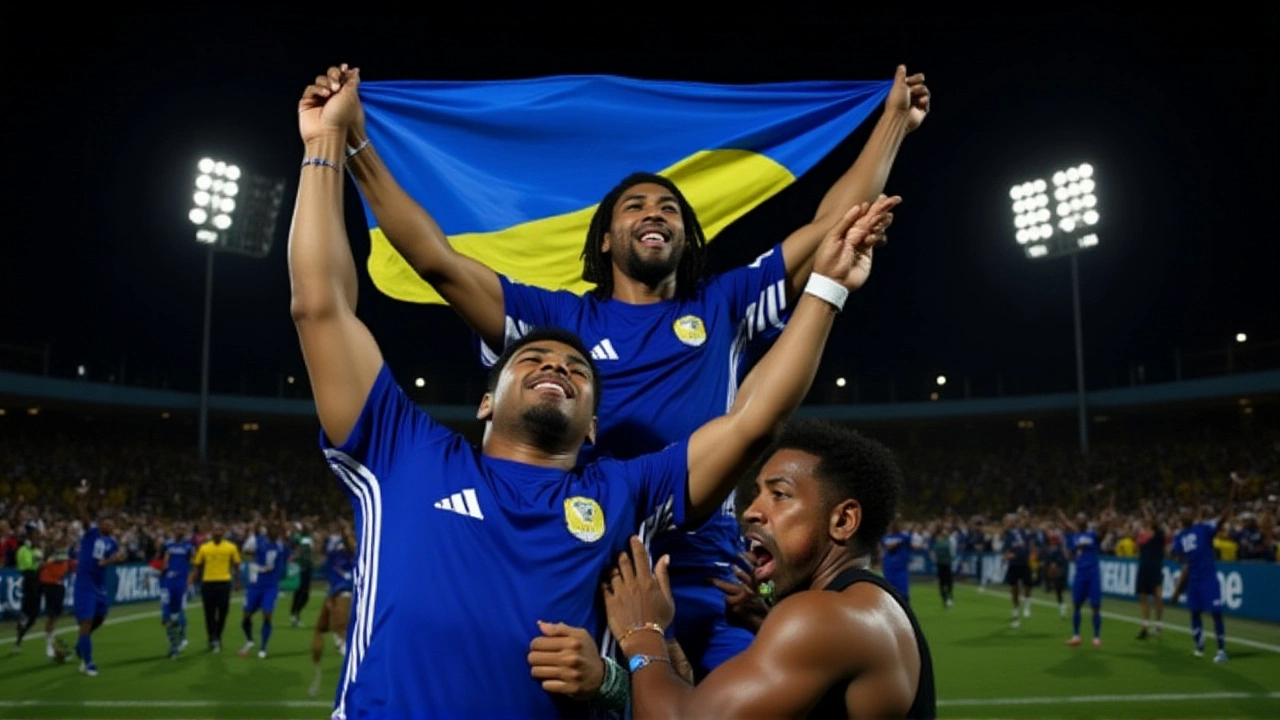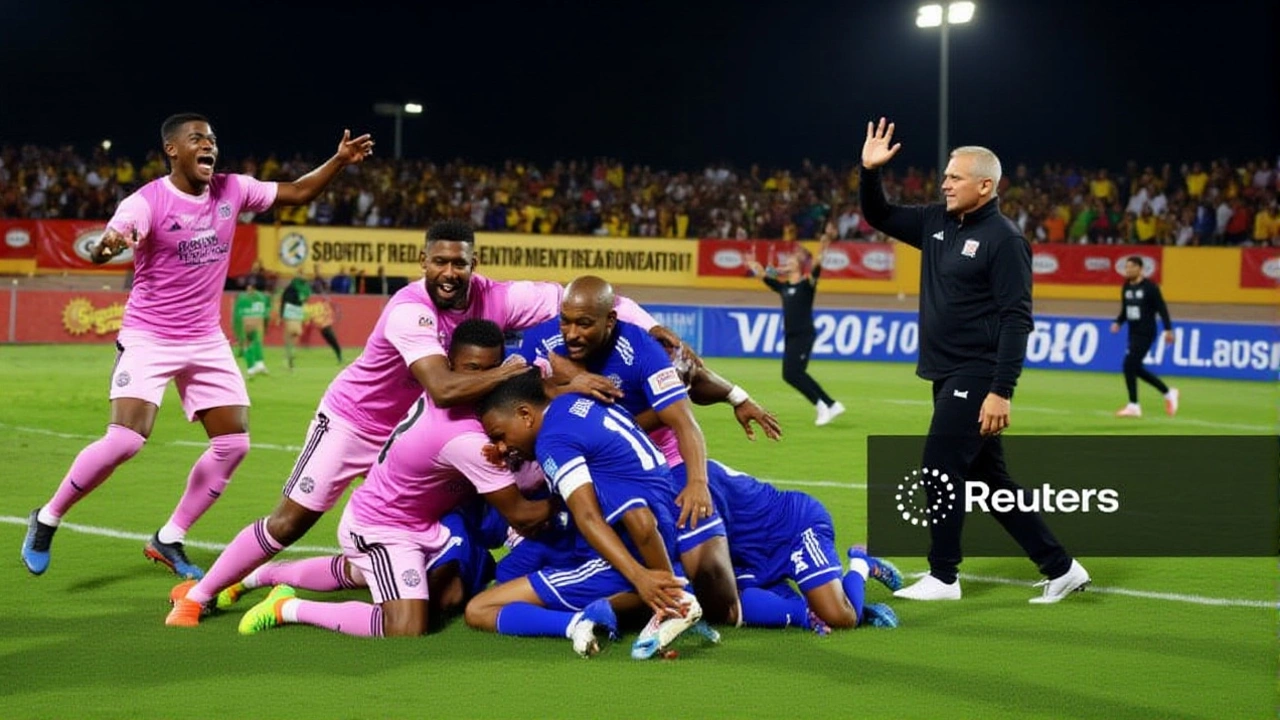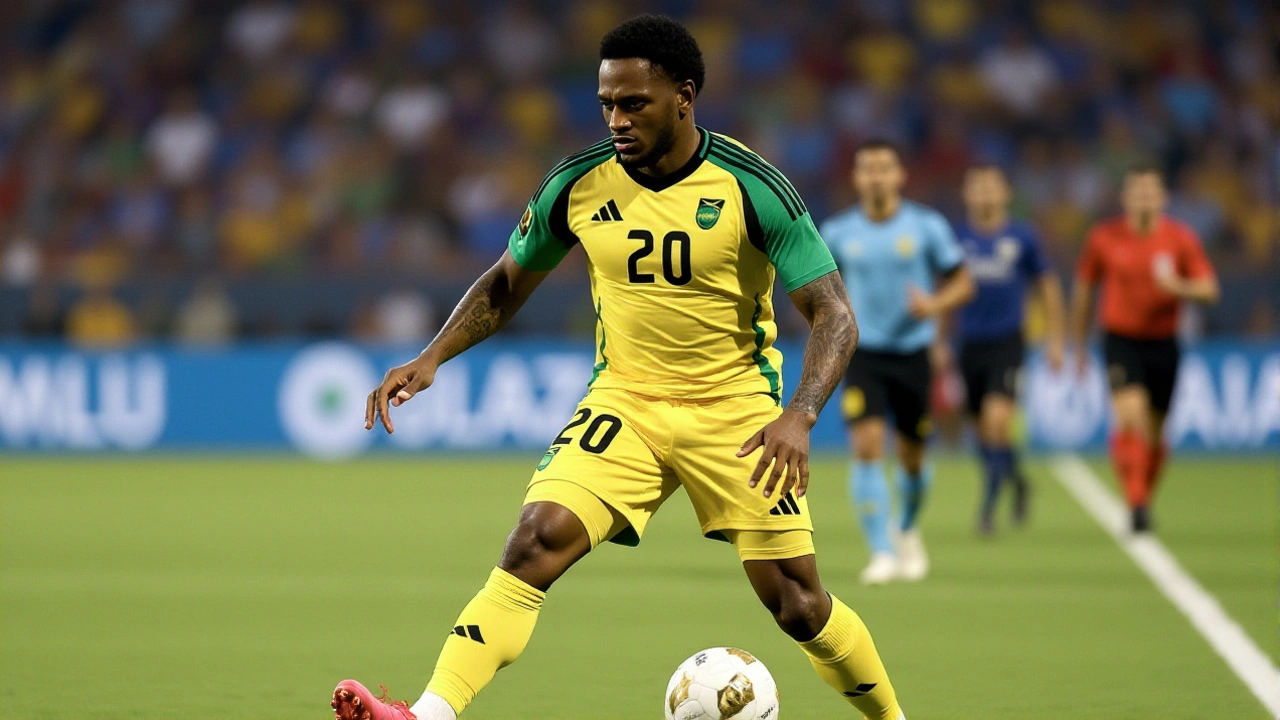It wasn’t supposed to end like this. On a humid Tuesday night in Kingston, with over 30,000 fans roaring and the weight of 27 years of near-misses hanging in the air, Jamaica failed to score a single goal against Curaçao in a 0-0 draw that crushed their dreams of automatic qualification for the 2026 FIFA World CupUnited States, Canada, and Mexico. The match, played at the National Stadium on November 18, 2025, wasn’t just another qualifier—it was Jamaica’s last shot at direct entry, and they left with nothing but regret, missed chances, and the haunting sound of a stadium falling silent.
One Win, One Chance—And Jamaica Couldn’t Take It
Head coach Steve McClaren had said before kickoff that “this is the most important game of our careers.” And he wasn’t exaggerating. Jamaica needed a win. Not a draw. Not a lucky penalty. A win. Meanwhile, Curaçao, the Caribbean underdog known locally as “The Blue Wave,” only needed a point to become the smallest nation ever to qualify for a World Cup. Their population? Just over 160,000. Jamaica’s? Nearly 3 million. The math was brutal. The pressure, unbearable. The match was a tense, physical affair. Jamaica controlled possession early, but their final third play was sloppy. At the 1:47:20 timestamp in the CONCACAF World Cup Qualifier footage on YouTube, Jamaica struck the crossbar with a curling shot from the edge of the box. Moments later, at 1:49:00, Curaçao thought they’d taken the lead—only for VAR to rule it offside. Then, at 2:03:30, Craig Lee, Jamaica’s most dangerous forward, smashed a left-footed drive off the post. The ball ricocheted into the net, but the referee’s whistle blew for a foul in the buildup. The crowd gasped. Then groaned. Then, silence.Watchalongs Turned Into Emotional Rollercoasters
Thousands tuned in live. Kranky Live streamed their pre-match watchalong starting at 7:00 PM EST, promising “real-time reactions to every chance, save, and VAR moment.” Their host, a longtime Jamaica fan from Toronto, broke down McClaren’s 4-3-3 formation and warned: “If we don’t score by the 70th minute, we’re in trouble.” By the 85th minute, he was crying on camera. Tallawah TV offered expert commentary from former Reggae Boyz captain Michael DeShawn, who said, “We’ve had chances before—but never this close. Never with the whole country holding its breath.” Meanwhile, MG Sports TV ran a StreamYard-powered stream with a live chat that exploded with emojis—flags, crying faces, fists in the air. One message read: “If this doesn’t get us to Qatar 2022, nothing will.” The irony wasn’t lost on anyone. This was 2025. The last time Jamaica made it to the World Cup? 2014. Before that? 1998. Twenty-seven years. That’s a generation.The Numbers That Broke Hearts
The stats told the story:- 12 shots on target (Jamaica) vs 3 (Curaçao)
- 65% possession for Jamaica
- 0 goals scored
- 2 clear goal-scoring chances missed—both off the woodwork
- 0 clean sheets for Jamaica in their last 5 qualifiers

What This Means for Jamaica’s Future
The draw leaves Jamaica in third place in Group B, behind Canada and Panama. They now face a playoff path in March 2026—a brutal gauntlet against the fourth-place teams from CONCACAF’s final round. The odds? Less than 20%, according to FiveThirtyEight’s simulation model. For a nation that once danced into the 1998 World Cup with a squad of amateur players and a coach who’d never managed a top-flight team, the disappointment is deeper than any statistic can capture. McClaren, a former Manchester United assistant, has been criticized for his conservative approach. “We played too safe,” said Clive Mendonca, former Jamaica international and now a BBC analyst. “We had the talent. We had the home crowd. But we didn’t have the courage to take the game by the throat.”The Bigger Picture: A Caribbean Football Revolution?
Curaçao’s draw is historic. If they advance through the playoffs, they’ll become the smallest sovereign nation—by population—to ever qualify for a World Cup. Their football federation, once underfunded and disorganized, now boasts a youth academy in Willemstad and a professional league that’s grown from 8 to 14 teams since 2020. Their rise mirrors the rise of other Caribbean nations: Jamaica, Haiti, Suriname. Football here isn’t just sport—it’s identity. But for Jamaica, this match was a mirror. What do you do when your best players are scattered across Europe’s lower leagues? When your national team has no permanent training base? When your federation is still recovering from a 2023 corruption scandal? The answer isn’t just tactics. It’s infrastructure. Investment. Vision.
What’s Next?
The playoff draw for the CONCACAF fourth-place teams will be held on January 15, 2026. Jamaica will be seeded third. They’ll likely face either Trinidad and Tobago, Haiti, or Suriname. Win that, and they’ll face a South American team in a two-leg playoff. Lose, and the Reggae Boyz’ World Cup dream dies again. For now, Kingston is quiet. The flags are still up. But the chants are gone.Frequently Asked Questions
Why didn’t Jamaica qualify even though they had more possession and shots?
Possession doesn’t guarantee goals. Jamaica had 12 shots on target but lacked clinical finishing. Key attackers like Craig Lee and Purasa Hassan missed clear one-on-one chances, and their midfield failed to deliver consistent crosses or through balls. Curaçao’s compact defense, combined with Jamaica’s over-reliance on long balls, neutralized their advantages. In football, quality over quantity wins matches—and Jamaica simply didn’t have the final touch.
How did Curaçao manage to hold Jamaica without their star players?
Curaçao didn’t need stars—they needed structure. Their coach, Erwin Hoffer, deployed a 5-4-1 formation that sacrificed attacking flair for defensive solidity. Their backline, led by Kevin van der Kooij, stayed disciplined, and their midfielders tracked every run. Even without their top scorer, who was suspended, they relied on teamwork, positioning, and discipline. It’s a model smaller nations are adopting: organization over individual brilliance.
Was the 0-0 result fair based on the match performance?
Yes, in terms of outcome. Jamaica dominated possession and created more chances, but Curaçao defended with incredible resolve and had their own dangerous counters. The two woodwork hits by Jamaica were the difference—had either gone in, the result would’ve changed. But football rewards execution, not effort. Curaçao earned the draw. Jamaica didn’t convert. That’s the brutal truth of knockout football.
What role did the crowd play in the match?
The crowd was electric—over 30,000 fans filled the National Stadium, singing from minute one. But as the match wore on and chances went begging, the noise turned to silence. Some fans left early. Others stood in disbelief. The atmosphere didn’t break Jamaica—it lifted them, briefly. But without goals, even the loudest crowd can’t force the ball into the net. The pressure, not the noise, became the real opponent.
What are Jamaica’s chances in the March 2026 playoffs?
Jamaica’s playoff odds are slim—under 20% according to FiveThirtyEight’s model. They’ll face a tough opponent, likely Haiti or Trinidad and Tobago, and must win two legs. Their squad lacks depth, with many players in lower-tier European leagues. Without a major overhaul in coaching, scouting, and youth development, their window for World Cup qualification may have closed—for now.
Why was this match considered the biggest in Jamaica’s football history?
Because it was the first time since 1998 that Jamaica had a realistic, unambiguous path to automatic qualification. No playoffs. No luck. Just a win. The last time they qualified, the team was led by a retired police officer turned coach and a squad of semi-pros. This time, they had experienced players in England’s Championship and Scotland’s Premiership. The stakes were higher, the expectations greater, and the failure more painful. For a nation that once dreamed of the World Cup, this was their closest shot in 27 years—and they let it slip.
